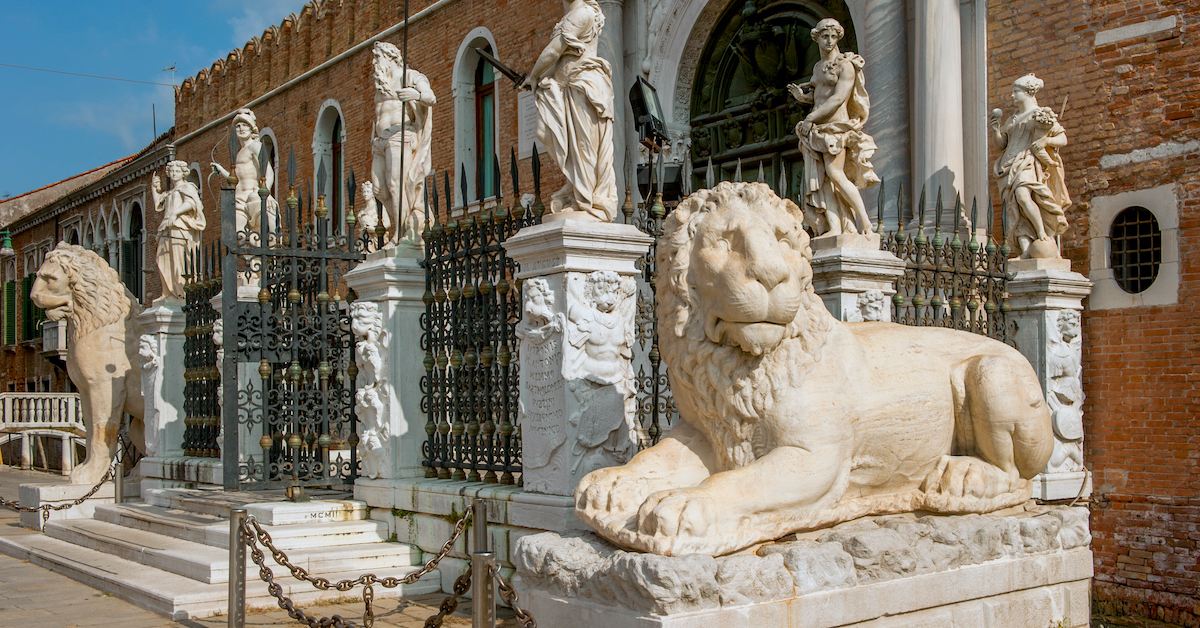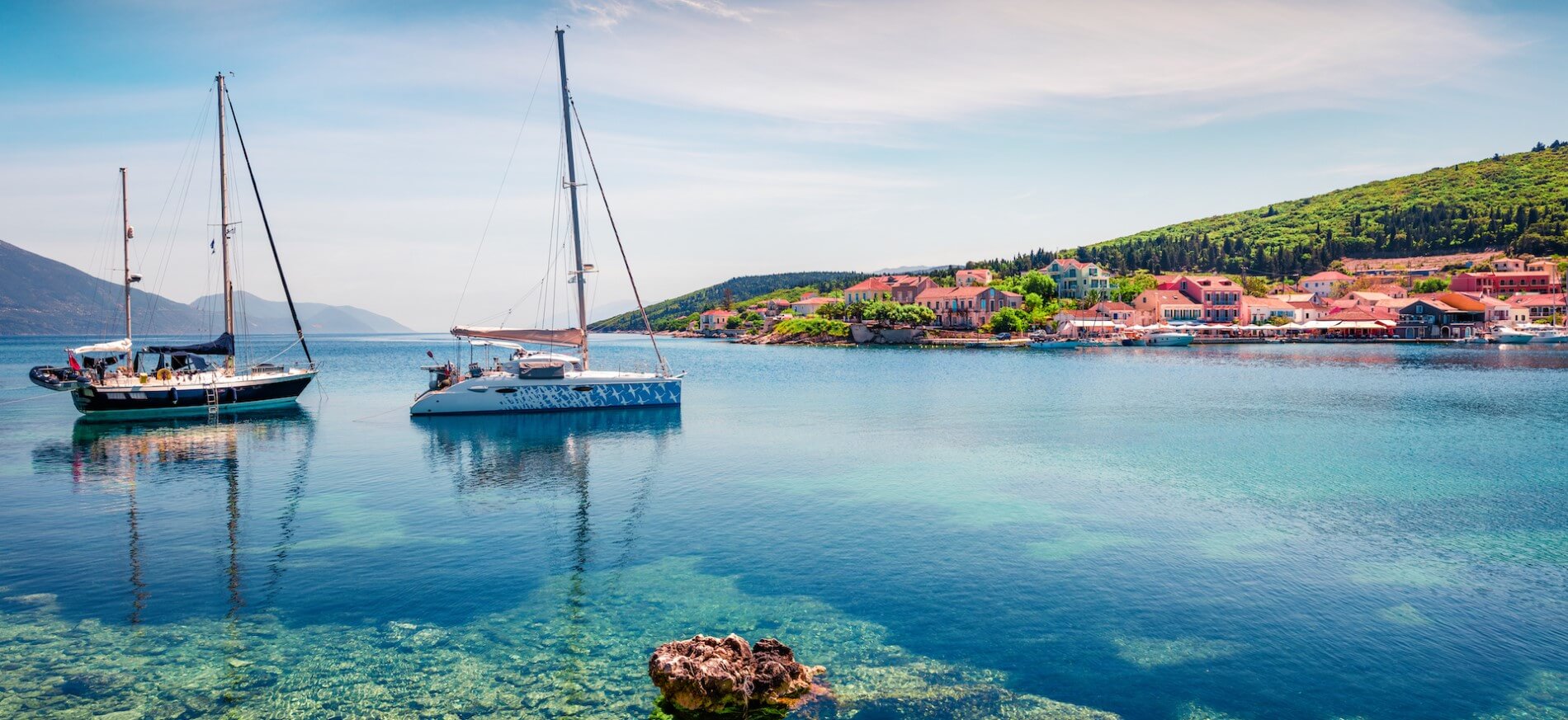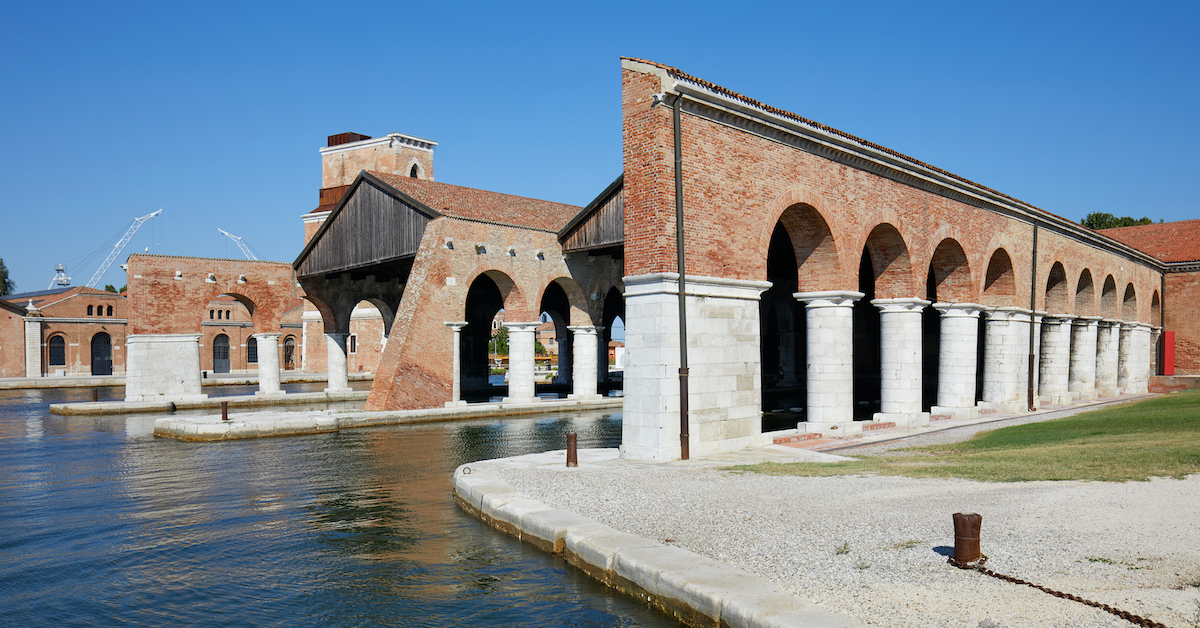Venetian Arsenal, Italy: Off The Beaten Path
Existing in part as early as the 8th century, the Venetian Arsenal is a vast complex of shipyards and armories now open to the public for exploration. Featuring outdoor spaces and a walking bridge, possibly the most interesting feature on the grounds is the Piraeus Lion statue at the main gate. With a perplexing inscription and intimidating 9-foot stature, this lion demands the attention of all who question the naval power of the republic of Venice.
Spanning about 110 acres (or about 15% of Venice), the Venetian Arsenal was the largest industrial complex in not only Italy, but the entirety of Europe before the Industrial Revolution. The trading vessels built here generated a large portion of Venice’s wealth and power throughout the centuries. The main gate “Porta Magna” was created around 1460 as one of the first works of Venetian Renaissance architecture.

© Javarman | Dreamstime.com
Later in 1687, two white marble lions were plundered in Athens and brought to Venice to stand guard next to the main gate, giving the name “Porto Leone” or Lion Port. One of the sculptures, known as the Piraeus Lion, was displayed as a symbol of Saint Mark, Venice’s patron saint. Originally created around 360 BC, the lion was defaced by Scandinavian mercenaries in the 11th century. With runes carved in a dragon-like scroll on the shoulders of the lion, many have tried to decipher the meaning. Take a look for yourself; what is the Lion of Saint Mark telling you?
Featured image: © Andersastphoto | Dreamstime.com


